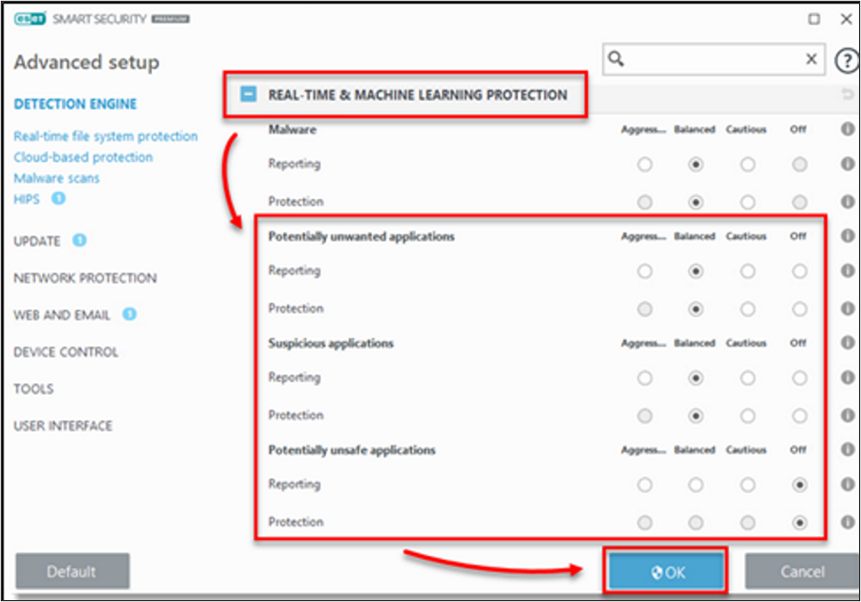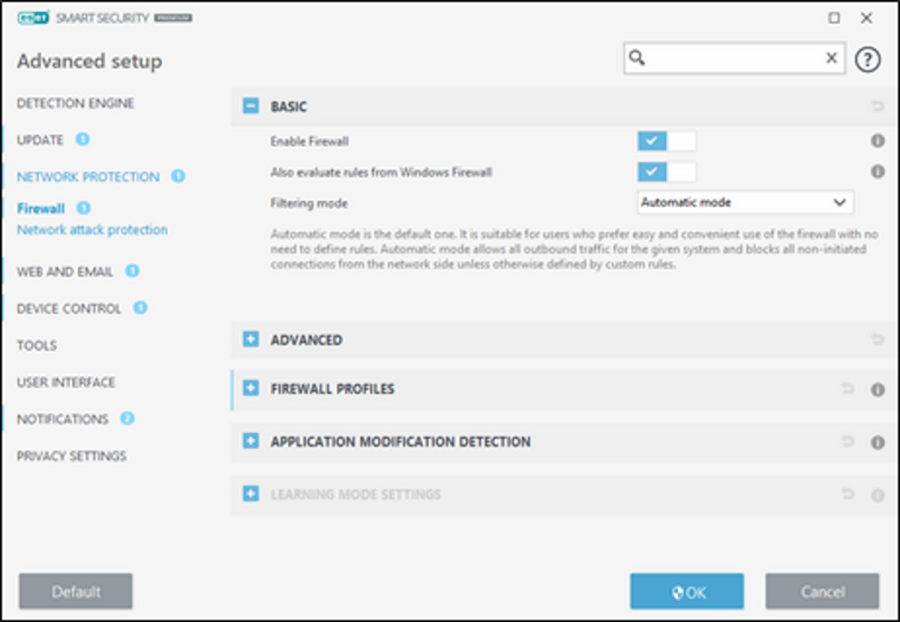Shields up!
Created: 2022-05-03 07:23:38

If you’re a sci-fi fan, especially if you’re 40 or over, you have heard “shields up” so many times in your reading and viewing career that you might see shields, deflectors, and force fields as lame carryovers from the early days of sci-fi film and TV. While perhaps Buck Rogers’ or Flash Gordon’s ships didn’t have shields, there aren’t too many space adventurers that have gone boldly into the cosmos without them.
Since most of us now stream our sci-fi addictions, perhaps you too simultaneously watch and research strange bits of geekdom and trivia. If that’s the case, while exploring the web for space and sci-fi geekery, let’s not strike out too boldly into the internet galaxy. Why? Because just like our heroes, we too can have chance encounters with hostile alien forces. When that does happen, our anxiety triggers the call to raise shields. The feeling is nearly universal.

Again, just like our heroes, we are also equipped with sophisticated tech. While we may not pilot the Starship Enterprise or the fabled Millennium Falcon, we still need to be observant and assess the risks that may hinder us from keeping our cyberspace vessels in good shape. Of course, many PC users secure their cyberspace ships with digital security solutions, but have you ever wondered about the built-in settings that your “shields” have and how these can meet your needs in different conditions?
Familiar terms
“General quarters, general quarters! All hands man your battle stations!” In US Navy lingo, this announcement is used to alert the crew to prepare the vessel for potential combat. Fandom’s Military Wiki site characterizes general quarters as follows: “Off-duty or sleeping crew members report to their stations and prepare for action, watertight doors and fireproof doors between bulkheads are shut and security is increased around sensitive areas, such as the bridge and engineering rooms.” For IT users armed with digital security products, we can identify the default “balanced” settings as equivalent to general quarters.
The “balanced” settings for ESET’s consumer security products are ideal for practically every scenario; however, they can be modulated to “aggressive.” The differences between these might be comparable to placing a 21st century warship side by side with a 20th century one. In the last century, warships were designed for aggressive protection and could feature hardened steel armor plate upwards of 30 cm thick to repel projectiles. Today, warships are designed with a more balanced approach, relying less on armored plates and more on electronic sensors to be lightweight and fast, and to detect and neutralize missile threats before they strike. This comparison provides a simple analog: balanced protection brings speed, adaptability, and intelligence vs. aggressive protection, which uses hardened protective armor as a shield to withstand attacks head-on.
 <image 1. Detection Settings, Aggressive, Balanced, Cautious, Off>
<image 1. Detection Settings, Aggressive, Balanced, Cautious, Off>
Is cyberwar sci-fi? Although long anticipated, the potential emergence of cyberwar is now palpable. Misinformation, cyberespionage, surveillance, and the hacking of critical infrastructure are now on the table. Under such conditions home users might upgrade their digital security solutions, moving from a popular, but basic, product like ESET NOD32 Antivirus to ESET Smart Security Premium. Businesses may feel less flexibility to protect their business continuity as they’ve likely already committed to a particular course of action. Home users faced a similar dilemma with the move to remote work at the height of the COVID-19 pandemic.
But imagine you are in an acutely risky situation. Perhaps you are literally in a war zone or in a digital relationship with a business or individual that is likely to be targeted. What options do you have to beef up your protection?
Suppose you have assessed your risks and come up with the following:
- I work at an organization in possession of sensitive data or provides critical services.
- One or more digital relationships I hold have experienced digital disruption and security impacts.
- There is a failure in diplomatic relations with a powerful country.
- There have already been multiple cyberattacks and there is a high likelihood of more to come.
Now, if you were on one of sci-fi’s storied spacecraft, it would be easy: just raise shields to the aggressive setting, buy yourself some time, and think through the problem. But how is that done in cyberspace with your PC?
 <image 2.Detection Settings for Firewall, Web and Email, and More>
<image 2.Detection Settings for Firewall, Web and Email, and More>
“General quarters!” “Battle stations!” Or maybe not
There is a reason why you’ve likely never toyed with the advanced settings of your security software: I could screw it up! This is a distinct possibility. Luckily, in the case of ESET products, you can return to the default settings with a few clicks. To lessen any risks when experimenting with your settings, let’s compare the default “balanced” setting to the “aggressive” setting.
The balanced mode allows your PC to engage with the internet without raising overly suspicious alarms that might burden the user experience. The aggressive setting will set off multiple, paranoia-inducing alerts, appearing as:
- A blocked URL
- A warning about an untrustworthy URL
- A parental control warning about forbidden content
You will certainly encounter these alerts if you try to access mature or explicit content, or illegal download or streaming sites. However, in “aggressive” mode, even mundane websites may get flagged.
But back to sci-fi and shields. Clearly, having your shields up has a cost. That cost, among other things, would likely be the deterioration of usability. The right settings – the ability to modulate the shield’s protection – depend on what the shield is trying to block. The comparison with digital security holds up well here. Using the aggressive setting could yield a higher number of suspicious URLs blocked, but some useful resources could also be flagged and blocked too. The involved detections are largely based on longitudinal threat data held by ESET on the behavior of malicious websites and IP addresses, on malware samples, and on potentially unwanted applications, meaning ESET security products adjust in real-time to encountered threats.
Takeaway
Imagine that as an intergalactic explorer, large amounts of your attention and your ship’s energy supply is diverted to security and defensive shields. Logically, this slows down your efforts to discover new quadrants of the universe. Well, the internet is a universe too, and your exploration of it is also affected by how much attention and energy is diverted to your security.
This says a lot about why security software, malware research, and security awareness are all critical to our digital lives. We depend on each of these elements working in concert, and on each other as digital participants, for collective security.
After all, each machine running security software is part of an active sensor network feeding samples to be processed as clean, suspicious, or outright malicious. Once categorized, each machine in this network is updated with new detections and tuned or “modulated” in its defensive capability. Luckily, this journey into the “what if we used…?” aggressive settings was hypothetical. If we were really forced into an “aggressive” defensive posture on the internet, much of the fun and utility would be gone. In that scenario, we lose considerable benefit from digitalization and, instead of sci-fi fun, our user experience would become more akin to a zombie apocalypse.
About ESET
ESET develops software solutions that deliver instant, comprehensive protection against evolving computer security threats. ESET pioneered and continues to lead the industry in proactive threat detection. ESET NOD32 Antivirus, its flagship product, consistently achieves the highest accolades in all types of comparative testing and is the foundational product that builds out the ESET product line to include ESET Smart Security. ESET Smart Security is an integrated antivirus, antispyware, antispam and personal firewall solution that combines accuracy, speed and an extremely small system footprint to create the most effective security solution in the industry. Both products have an extremely efficient code base that eliminates the unnecessary large size found in some solutions. This means faster scanning that doesn’t slow down computers or networks. Sold in more than 160 countries, ESET has worldwide production headquarters in Bratislava, SK and worldwide distribution headquarters in San Diego, U.S. ESET also has offices in Bristol, U.K.; Buenos Aires, AR; Prague, CZ; and is globally represented by an extensive partner network. For more information, visit our local office at https://eset.version-2.sg.
About Version 2 Limited
Version 2 Limited is one of the most dynamic IT companies in Asia. The Company develops and distributes IT products for Internet and IP-based networks, including communication systems, Internet software, security, network, and media products. Through an extensive network of channels, point of sales, resellers, and partnership companies, Version 2 Limited offers quality products and services which are highly acclaimed in the market. Its customers cover a wide spectrum which includes Global 1000 enterprises, regional listed companies, public utilities, Government, a vast number of successful SMEs, and consumers in various Asian cities. For more information, please visit https://www.version-2.com.sg/ or call (65) 6296-4268.

